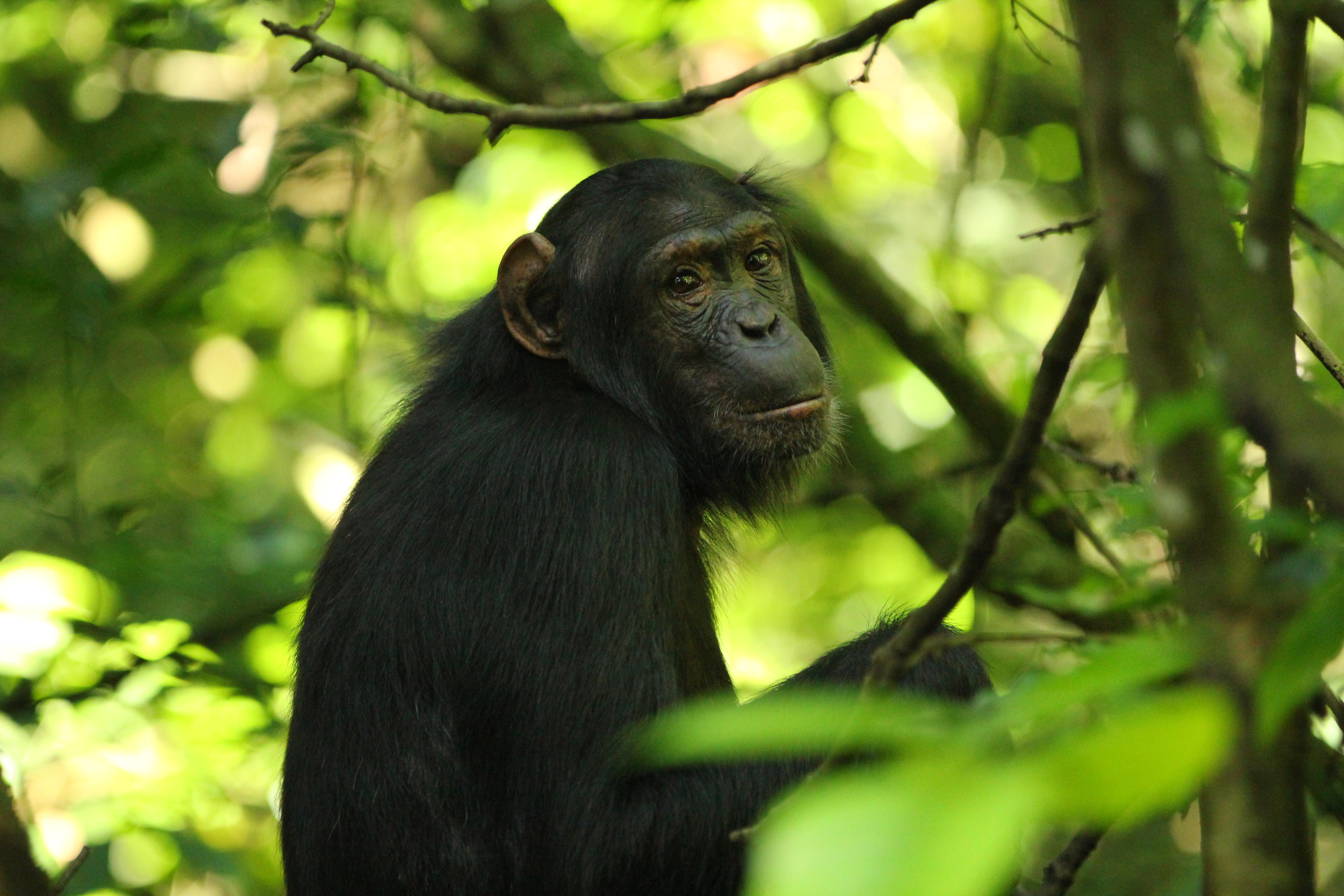Gene whiz! Researchers use DNA to unlock hidden chapters of human story
On National DNA Day, ASU scientists reveal how genetic analysis helps them research humankind's origins and futures

DNA — since the world first saw its iconic double helix structure in 1953, it has given scientists a treasure trove of insights into human health and uniqueness. And there’s no better time to appreciate this building block of life than on National DNA Day on April 25.
At Arizona State University, researchers in the School of Human Evolution and Social Change are using these building blocks to delve into wide-ranging topics, such as chimpanzee relationships and the roots of ancient tuberculosis, to better understand the human story.
How long have we had long-term relationships?
Kevin Langergraber, an assistant professor at the school and a research affiliate at the Institute of Human Origins, studies wild chimpanzees in Kibale National Park, Uganda.
“DNA allows me to determine how all of the 200 individuals belonging to the Ngogo chimpanzee community are related to one another,” he said. “I combine this data with long-term behavioral observations to study things like kinship’s impact on social bonds and the factors influencing male reproductive success.”
By researching chimpanzees, Langergraber gets a glimpse into how early human ancestors may have behaved, and thus, into the possible roots of modern human behaviors.

Chimpanzee behavior gives Kevin Langergraber a glimpse into the possible roots of human behaviors. Photo by Kevin Langergraber
Take chimps’ social and mating system, for example. On the surface, it’s very different from that of humans. Chimpanzee females mate with most males in their group, and males compete for higher rank and a better chance of siring offspring. In humans, however, most reproduction happens in the context of long-term relationships, or pair-bonds, between males and females.
But DNA tells a deeper story.
“I was very surprised a few years ago when I found that the amount of time that a male-female pair spent together was a better predictor of the male siring that female's infant than was his dominance rank at the time of conception,” Langergraber said.
In one case, DNA analysis revealed that a low-ranking chimp fathered three out of four offspring with a female he was close to for 16 years — suggesting that enduring relationships may go back very far in the human story.
Looking toward the future of DNA research, Langergraber said he hopes there will one day be technology that makes it easier and cheaper to get whole genome sequences out of low-quality sources, like the noninvasively collected fecal samples he currently uses to gather DNA.
“We would be able to better resolve the sorts of questions that we’re already pursuing, as well as many new types of questions that are currently far beyond our limitations.”
Will ancient-disease research protect us from TB?
Regents’ Professor Jane Buikstra studies ancient diseases, with a particular focus on tuberculosis (TB) — an illness that has affected humans for thousands of years and is today the top infectious killer worldwide, according to the World Health Organization.
To uncover the history of TB in the Americas before and after European contact, Buikstra examines ancient skeletal remains and extracts pathogen DNA from lesions that may have been caused by the disease.
Working with fellow researchers at the Center for Bioarchaeological Research, she has used this method to help reveal that a strain of TB was present in the Western Hemisphere several centuries before Europeans arrived. The group's most startling discovery, however, was the source of this strain.

Guilty: Seals or sea lions brought TB to the Americas more than 1,000 years ago. Photo from Pixabay.com
“The biggest insight DNA research has given me is that ancient TB in the Americas was brought to the east coast of South America by seals or sea lions more than 1,000 years ago,” she said.
Buikstra continues to study the evolutionary history of this and other strains of TB that spread across the Americas through human migration — work that can help inform clinical treatments and keep medical science ahead of how the disease may evolve in the future.
When asked what improvements she wants most in future DNA technology, Buikstra had a ready answer.
“I would most like to see refined methods for detecting changes that happen to ancient DNA as a result of the fossilization process,” she said. Such methods would allow her to dive even further into the deep history of various ailments and the lives of early humans affected by them.
Top photo courtesy of Pixabay.com
More Science and technology

Celebrating 34 years of space discovery with NASA
This year, NASA's Hubble Space Telescope (HST) is celebrating its 34th anniversary of the world's first space-based optical telescope, which paved the scientific pathway for NASA's James Webb Space…

Making magic happen: Engineering and designing theme parks
The themed entertainment industry is widespread and diverse, encompassing everything from theme parks to aquariums, zoos, water parks, museums and more. The Theme Park Engineering and Design…

AI-equipped feeders allow ASU Online students to study bird behavior remotely
ASU Online students are participating in a research opportunity that's for the birds — literally. Online Bird Buddies is a project that allows students to observe birds remotely, using bird feeders…